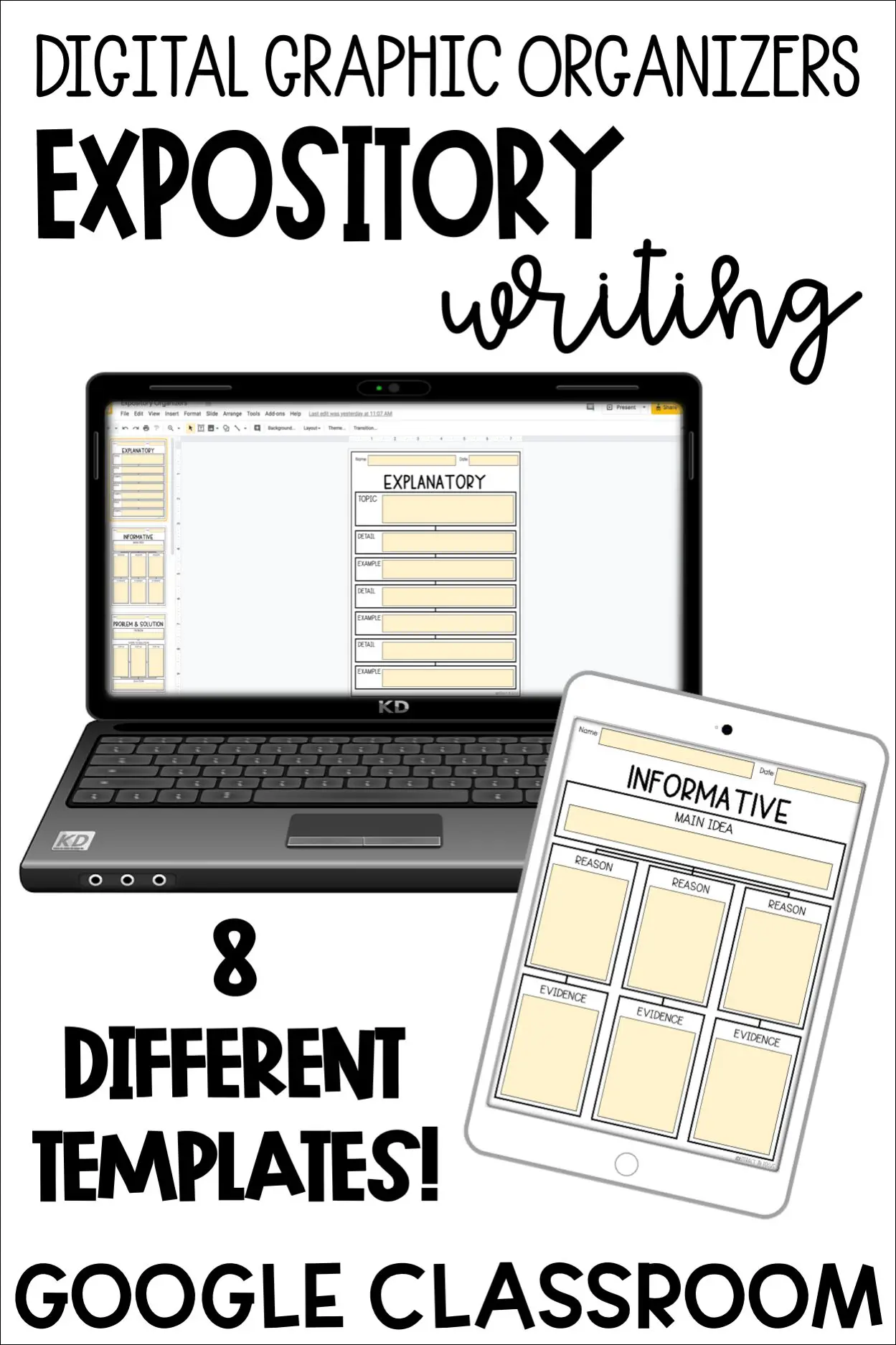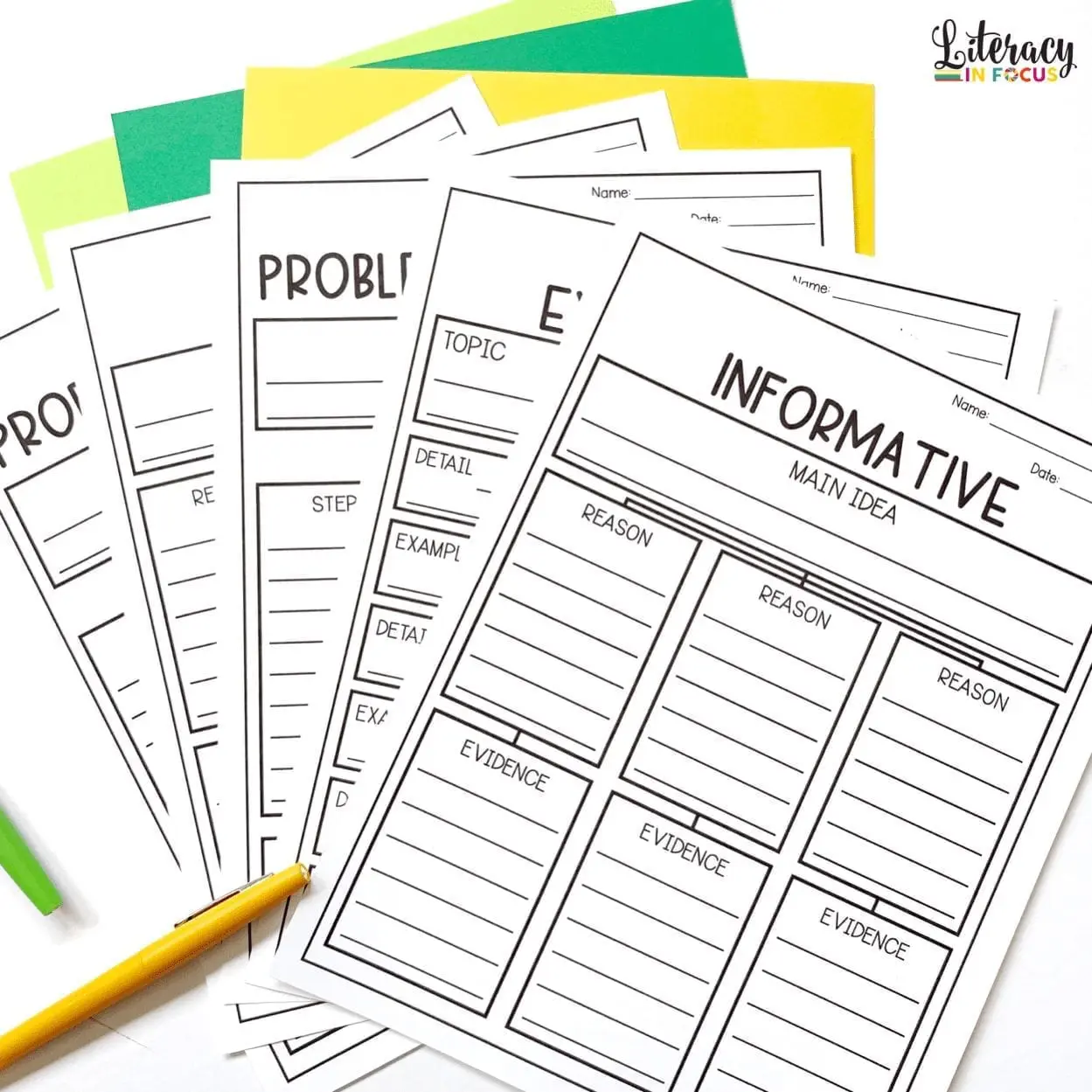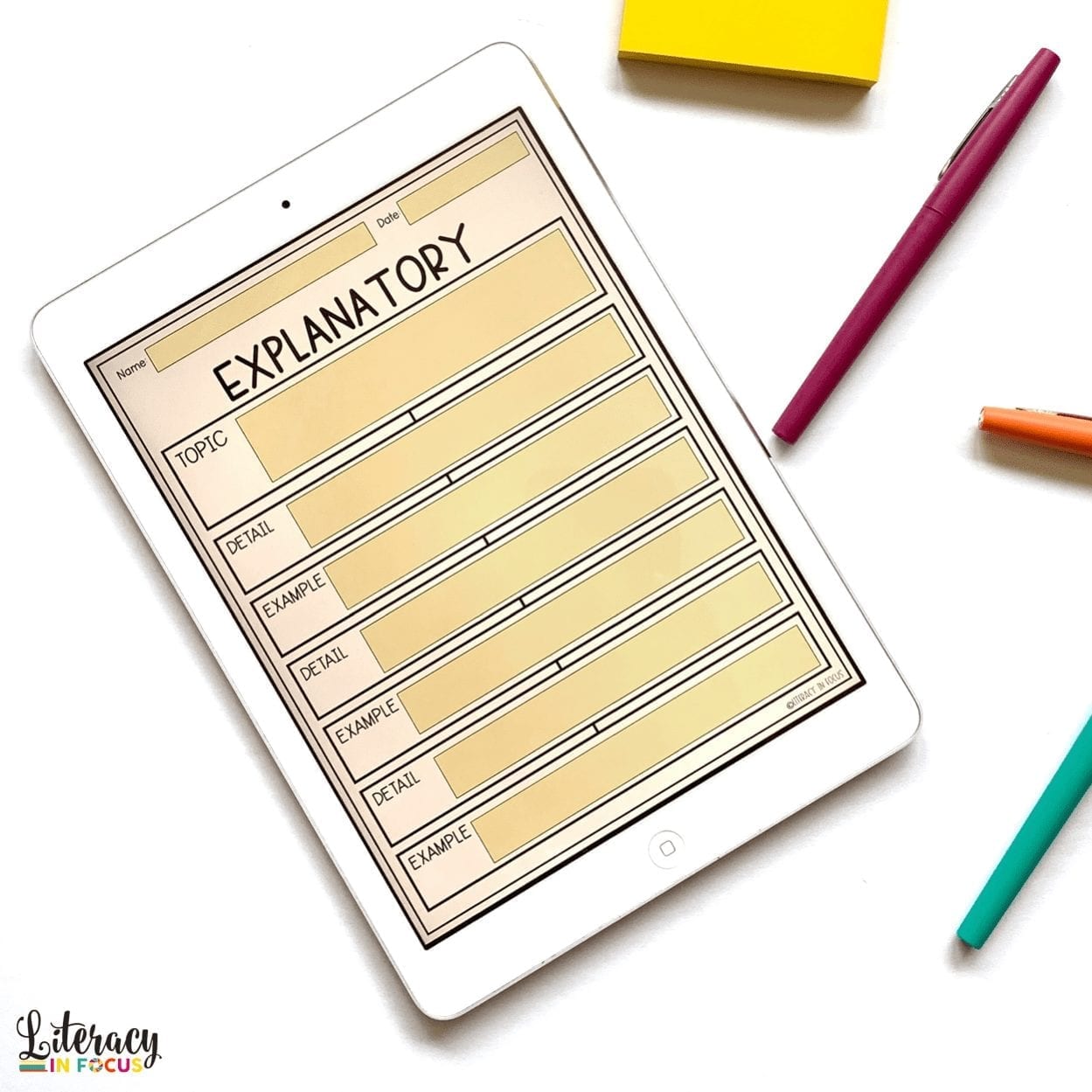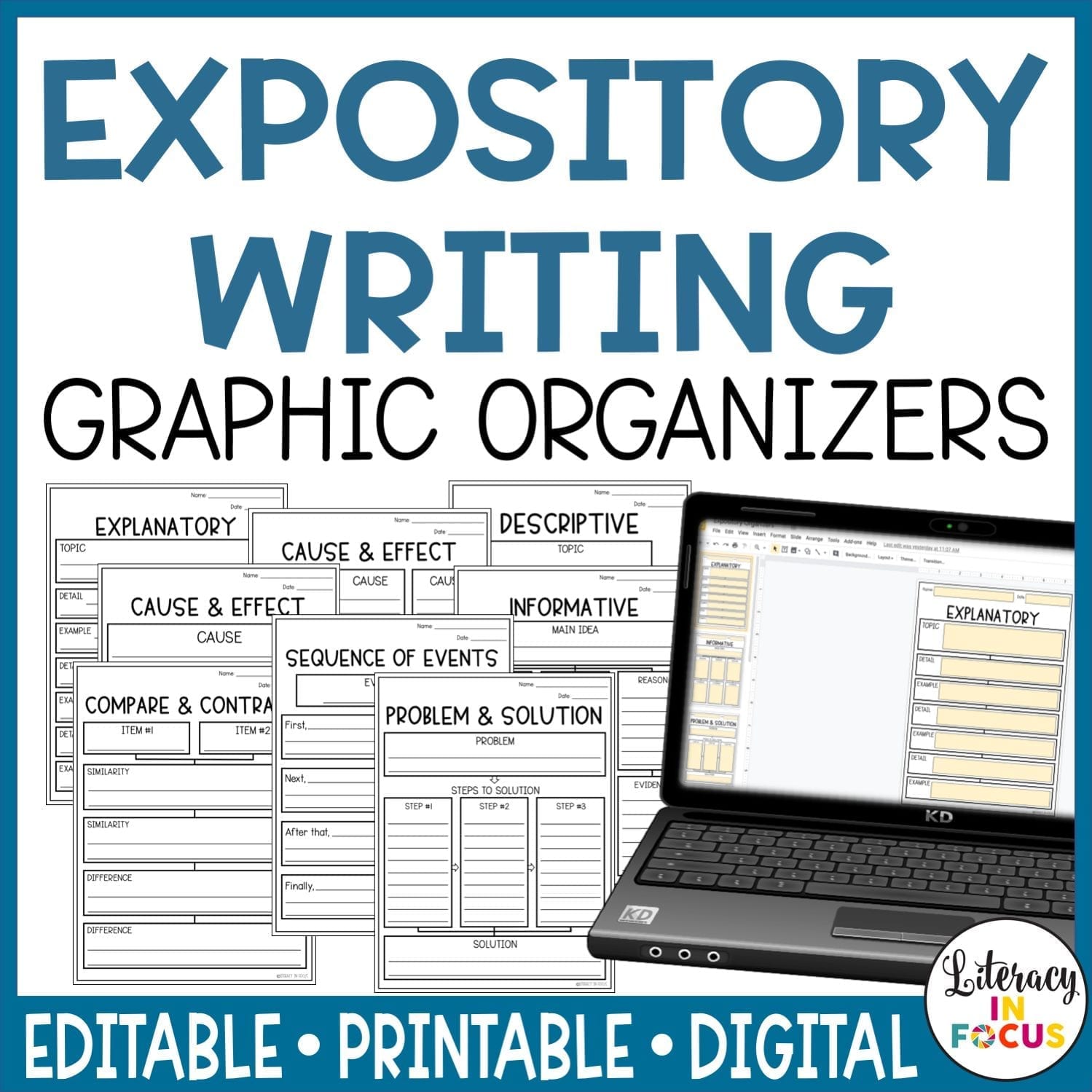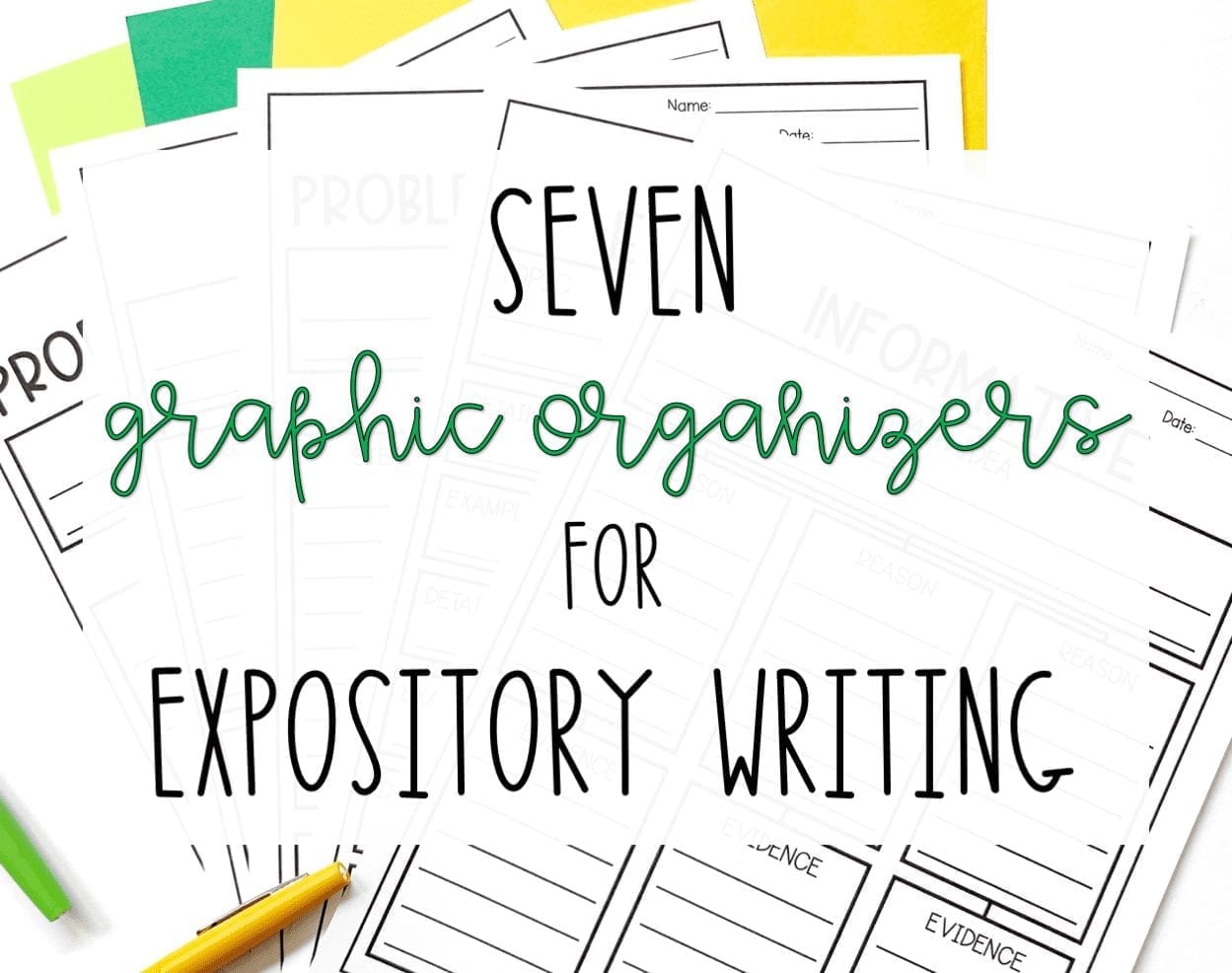
Let’s face it. Teaching students how to write an effective expository paragraph or essay is not for the faint of heart. As with any difficult lesson, I tend to rely heavily on graphic organizers. There is something magical about organizing content visually. The material becomes more accessible, which leads to an increase in understanding and successful results. Utilizing graphic organizers for expository writing is no exception. The structure and format of the graphic organizers explained below will work wonders for student confidence and abilities in the expository writing arena.
Explanatory
Whether working with paper and pencil or digitally, it’s important that students have a place to organize their thoughts before diving into their rough drafts. A graphic organizer can do just that. It will get the ball rolling in the right direction. When it comes to expository writing, students need an outline that will allow them to identify the topic with supporting details and concrete examples. It is a simple, yet powerful start to any expository writing assignment.
Informative
The informative graphic organizer works well for responding to informational text. Students are required to identify the main idea, support their choice with several reasons, and follow up with evidence or examples from the written work. In most cases, identifying the main idea will be the hardest part. Once students have pinpointed the main idea, plugging in the rest of the information becomes much easier.
Problem/Solution
When explained or represented visually, expressing a problem and solution becomes relatively easy to accomplish. First, have students identify and clearly explain the problem. After explaining the problem, students should record several steps that can be taken to solve the problem. Stating the problem and next steps will organically lead to a succinct solution. Requiring students to organize the information ahead of time ensures that their writing remains cohesive and easy to follow.
Want all of the graphic organizers detailed in this post? Click here to download them now from Literacy in Focus on TpT!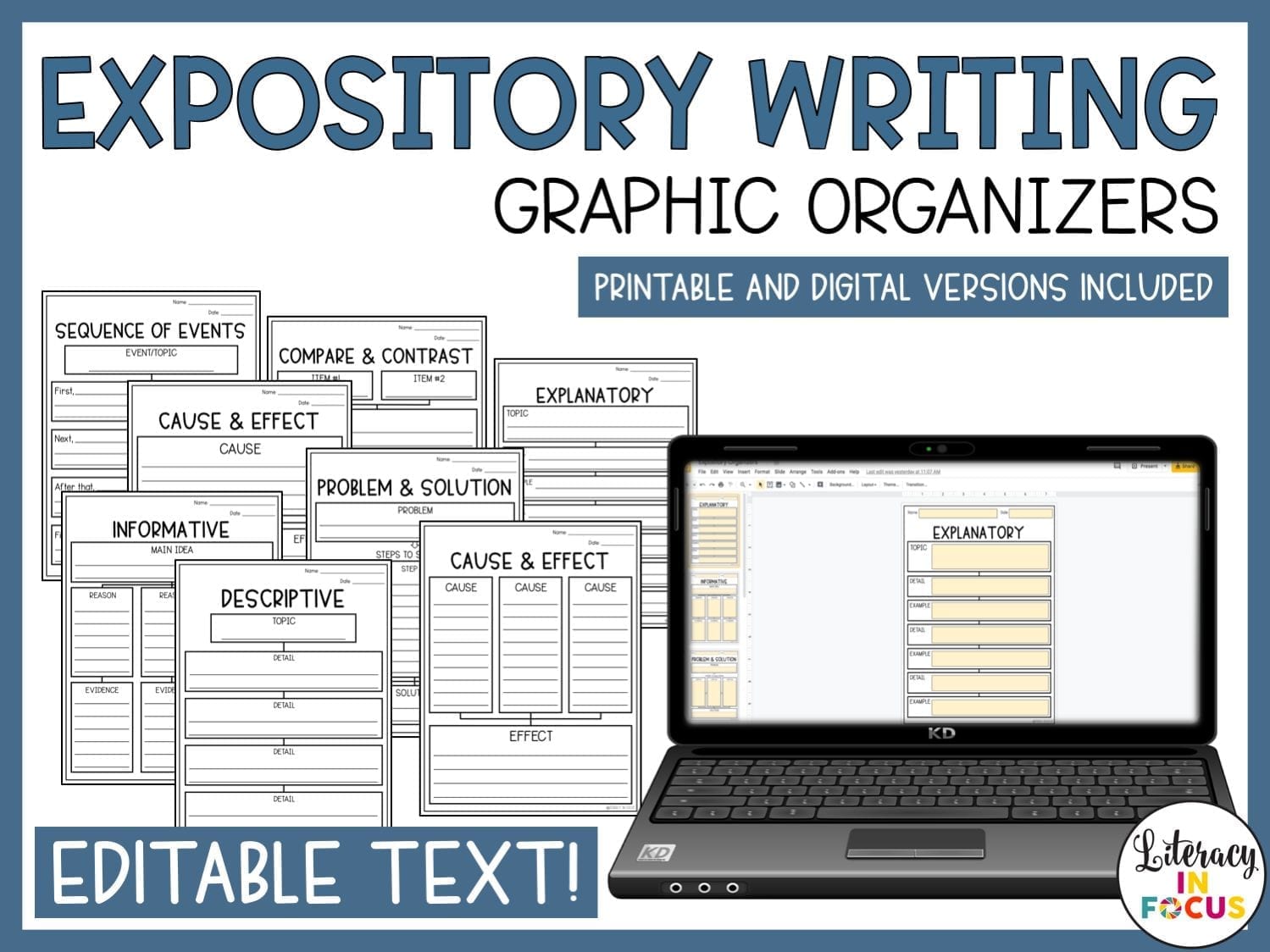
Compare and Contrast
Comparing and contrasting two concepts or items can be done in several different ways. Using a graphic organizer will assist students in figuring out how they will present the information in an orderly and concise format. Students should be required to begin by identifying each item being compared. Following a brief introduction of the items or concepts, students will explain the similarities. After thoroughly explaining the similarities, students move on to discuss the differences between the two items or concepts.
Cause and Effect
The initial step in writing about cause and effect is determining the order of presentation. Will students be presenting several causes and the ultimate effect of those causes, or will students be identifying one cause that led to several different effects? Once that has been determined, students can begin filling in their graphic organizer. The visual aspect of a cause and effect graphic organizer works extremely well for setting up an expository paragraph or essay.
Descriptive
Describing a topic or text is no different than writing a summary. There are many ways to tackle summary writing, but as with all of the graphic organizers mentioned above, clarity is essential. The graphic organizer should assist students in identifying critical information and avoiding extraneous details. It is vital that students understand the importance of each detail leading back to the overarching topic.
Sequence of Events
Chronicling a sequence of events can serve as a great starting point for expository writing. Embedding signal words within the graphic organizer will keep students on track and moving through the events in sequential order. Students begin by identifying the general topic, and follow up with a detailed description of each subsequent step.
Starting the expository writing process with a graphic organizer will provide your students with a road map to their final destination. It will set them up for success while stressing the importance of paragraph structure and organization.
